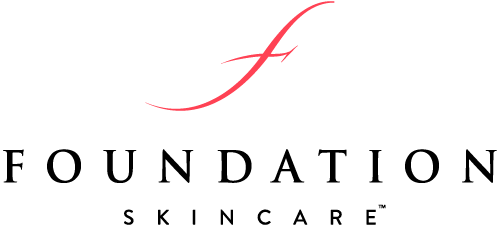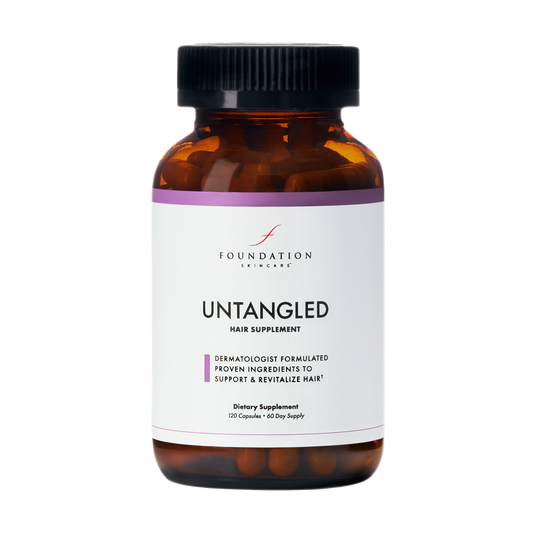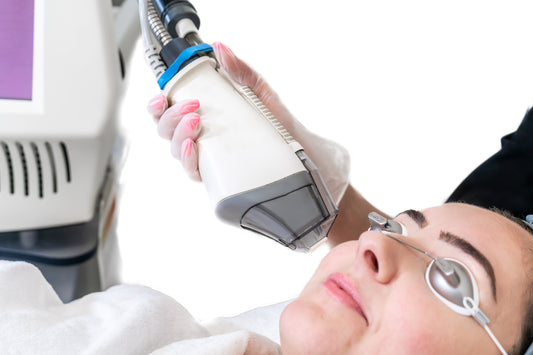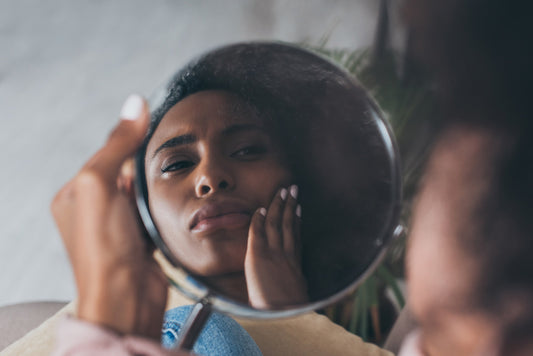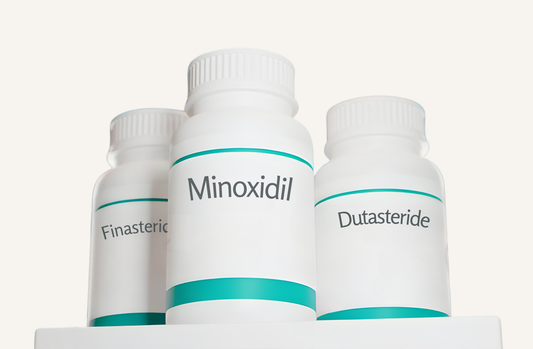Hair loss can feel confusing and overwhelming, with so many treatments — from over-the-counter supplements and topicals to prescription medications that come with certain side effects — claiming to help. To separate fact from hype, we spoke with our dermatologist who specializes in hair, Dr. Nuara, to answer common questions about prescription hair supplements, topical and oral medications like minoxidil, and other strategies to help revitalize hair.
What are Prescription Hair Supplements, and How do They Differ from Over-the-Counter Products?
Two things: intent and dosing. Physician-designed formulas are built around common lab abnormalities and real-world hair loss patterns we see in clinics, with doses that matter and ingredients that don’t trip lab work or medications. Off-the-shelf products can be scattershot, either underdosed, overloaded with a particular vitamin like biotin, or padded with ingredients that don’t move the needle. The ideal over-the-counter product is targeted nutrition that plays well with minoxidil/finasteride and real patient lives, which is how I’ve designed the UnTangled Hair Supplement formula.
What Causes Hair Thinning and Loss, and Why are Prescription Treatments Often Recommended?
The “why” usually falls into a few buckets: 1. Androgenetic alopecia (AGA): genetically driven miniaturization from DHT sensitivity. 2. Telogen effluvium: shedding after stress, illness, pregnancy, crash diets, meds. Then there are nutrient issues: low iron/ferritin, vitamin D, and zinc. As well as inflammatory/scarring processes, which are less common, but urgent to diagnose by a dermatologist, ideally one that specializes in hair loss.
For the best results, I recommend to combine all the approaches, because each tool targets a different lever. Minoxidil improves follicle blood flow/signaling. Finasteride/dutasteride reduces DHT (core for AGA). Supplements correct the terrain micronutrients, amino acids, and anti-inflammatory support so follicles can respond and stay in growth longer. It’s systems biology, not a single hammer.
What Factors Should Be Considered When Choosing a Hair Supplement?
Replacement of micro-nutrients involved in hair growth is the most important, but without overdoing it with too much of any of the ingredients. The idea is to replete and maintain healthy levels, not to overdo it and stress the system in the other direction — taking too much of certain ingredients, such as Vitamin A and Vitamim E can actually cause hair loss. It’s also important to choose a formula that has proven ingredients to help promote hair growth.
How Do These Products Compare in Terms of Effectiveness for Different Types of Hair Loss (e.g., androgenetic alopecia vs. other causes)?
Supplements that support hair growth and are generally used for androgenetic and telogen effluvium-induced hair loss.
Can These Treatments Be Combined, or Are They Best Used Individually?
We often combine the supplements with minoxidil, either topically or orally. Because of overlap it is best to pick one hair supplement and stick with it, for at least 6 months. Combining them could lead to dangerous levels of some vitamins.
Are There Specific Lifestyle Changes or Additional Treatments (e.g., diet, topical products) that can enhance the Effects of Prescription Hair Supplements?
I generally recommend a well-balanced diet, but with a focus on lean proteins.
What are the Most Common Side Effects of These Medications, and How Can They be Managed?
Thankfully, side effects of UnTangled are few and far between. Any capsule taken on an empty stomach can cause stomach upset, so I recommend taking them with food. It is possible to take in too much of a vitamin, which can have more adverse reactions, such as hair loss. You might find this article informative.
What Should Patients Know About Stopping These Treatments? Will Hair Loss Resume if Treatment is Discontinued?
I compare maintaining your hair loss to brushing your teeth: if you stop either, they may fall out!
How Accessible are These Treatments, and are They Typically Covered by Insurance?
These treatments have become increasingly accessible. UnTangled is available online and through leading dermatologists. Prescription medication, as well as evaluation of hair loss, is available through board-certified dermatologists.
UnTangled Hair Supplement
• Reduces shedding & thinning
• Strengthens hair follicles
Product-Specific Questions
Minoxidil
How does Minoxidil work to promote hair growth?
Minoxidil is a potassium-channel opener and vasodilator that pushes follicles from resting (telogen) into growth (anagen), likely by improving follicular blood flow, prolonging anagen duration, and up-regulating growth signals in the dermal papilla. The exact mechanism isn’t fully nailed down, but clinically it increases hair count and diameter across sexes and ethnicities.
Is it more effective as a topical treatment or oral supplement, and why?
They’re both effective; choice is about patient fit. A 2024 randomized trial found 5 mg oral daily and 5% topical twice daily produced similar 24-week efficacy in male AGA; oral had more systemic side effects, topical more scalp irritation. I use topical first for many; low-dose oral (typically 0.625–2.5 mg/day in women; 1.25–5 mg/day in men) is great when adherence, scalp irritation, or cosmetic residue are issues.
Are there any notable side effects or limitations to Minoxidil use?
Topical: scalp irritation/dermatitis; rarely headaches or palpitations.
Oral (low-dose): hypertrichosis (face/body), ankle edema, tachycardia, lightheadedness; rarely hypotension or pericardial effusion (drug carries a boxed warning from its antihypertensive days, so I screen cardiovascular history and start low). Temporary shedding in the first 6–8 weeks can occur as follicles cycle into anagen.
Finasteride
How does Finasteride work to prevent hair loss?
Both inhibit 5-α-reductase, lowering scalp/serum DHT—the main androgen that miniaturizes follicles in androgenetic alopecia. Finasteride inhibits type II (and to a lesser extent type III); dutasteride inhibits types I, II, and III, so it suppresses DHT more deeply.
How long does it typically take to see results with Finasteride?
Expect visible reduction in shedding by ~3 months, early regrowth by 4–6 months, and the full readout at 12 months; gains plateau around 12–24 months with continued use.
Dutasteride
How does Dutasteride compare to Finasteride in terms of efficacy and safety?
They are very similar but it is worth noting that dutasteride has a very long half-life — this means that it takes much longer (months) to clear your system so any side effects may persist for a while.
What are its advantages in treating hair loss, and are there any unique considerations?
It is a little more specific for the form of the enzyme involved in hair loss. Its long half-life means missed doses have less of an effect on treatment courses.
Why might someone be prescribed Dutasteride instead of other options?
Dutasteride is thought to be stronger than finasteride in terms of treating hair loss. Because it sticks around for much longer it is mostly off limits to women who can still conceive children.
Managing hair loss isn’t about finding one “miracle” product — it’s about using the right tools together, based on your specific type of hair loss. Prescription supplements, medications, and lifestyle choices can all play a role in supporting healthier, fuller hair. You can start with the more gentle non-medicated options and then add on more drastic measures under the care of a specialized dermatologist.
